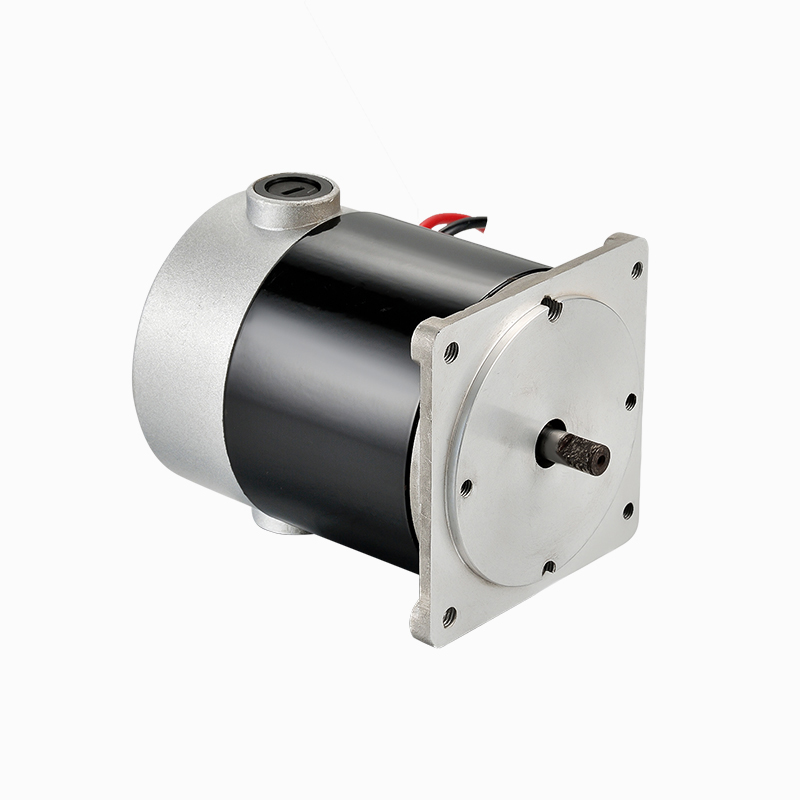Call us
+86-18023576732
+86-0579-89008006
Fax: +86-0579-82206899
In the intricate world of electrical engineering, the Permanent Magnet DC Motor (PMDC) stands as a cornerstone of many technological advancements. These motors are renowned for their efficiency, compact design, and reliability, making them indispensable in a variety of applications ranging from consumer electronics to industrial automation. However, the electromagnetic compatibility (EMC) of Permanent Magnet DC Motors is a critical aspect that must be evaluated to ensure they perform well without causing or experiencing interference in their operational environment.

The electromagnetic compatibility of a Permanent Magnet DC Motor refers to its ability to function without emitting electromagnetic emissions that could disrupt other electronic devices or being susceptible to such emissions itself. This is particularly important in environments where multiple electronic systems operate nearby, such as in automotive systems, medical equipment, and industrial control panels.
One of the primary factors affecting the EMC of Permanent Magnet DC Motors is the quality of their design and construction. High-quality motors use materials and components that are carefully selected to reduce electromagnetic interference. For instance, the use of laminated steel in the motor's core helps to reduce eddy current losses, which in turn reduces the generation of unwanted electromagnetic fields. Additionally, the encapsulation of the motor's electronic components within a shielded housing can significantly enhance its EMC performance.
The operation of Permanent Magnet DC Motors also plays a significant role in their EMC characteristics. These motors, when properly controlled, can maintain a stable electromagnetic field, thus reducing the risk of interference. Advanced control systems that employ pulse-width modulation (PWM) techniques can further minimize the electromagnetic noise generated by the motor. Such control systems not only improve the motor's efficiency but also contribute to its electromagnetic compatibility.
Another aspect to consider is the testing and certification process for Permanent Magnet DC Motors. Motors that have undergone rigorous EMC testing and have obtained relevant certifications, such as those provided by international standards like the International Electrotechnical Commission (IEC), can be trusted to meet stringent EMC requirements. These tests include emissions testing, where the motor is assessed for its ability to operate without emitting excessive electromagnetic interference, and immunity testing, which evaluates the motor's resilience to external electromagnetic fields.
The EMC of Permanent Magnet DC Motors is also influenced by their application. In environments where high levels of electromagnetic interference are expected, such as in proximity to transformers or high-voltage power lines, special considerations must be taken to ensure the motor's compatibility. This may involve the use of additional shielding, filtering, or other mitigation techniques to protect the motor from external electromagnetic disturbances.
Moreover, the EMC performance of Permanent Magnet DC Motors is not a static characteristic; it can be affected by wear and tear over time. Regular maintenance and inspection of the motor can help identify and rectify issues that may compromise its electromagnetic compatibility. This includes checking for damaged insulation, loose connections, or signs of corrosion that could cause increased electromagnetic emissions.
In conclusion, the electromagnetic compatibility of Permanent Magnet DC Motors is a multifaceted issue that requires a comprehensive approach. It involves the careful selection of materials, the implementation of advanced control techniques, adherence to strict testing and certification standards, and ongoing maintenance to ensure the motor's performance remains uncompromised. As technology continues to advance and the density of electronic devices increases, the importance of EMC in Permanent Magnet DC Motors will only grow, making it a critical consideration for designers, manufacturers, and users alike.
Contact Us